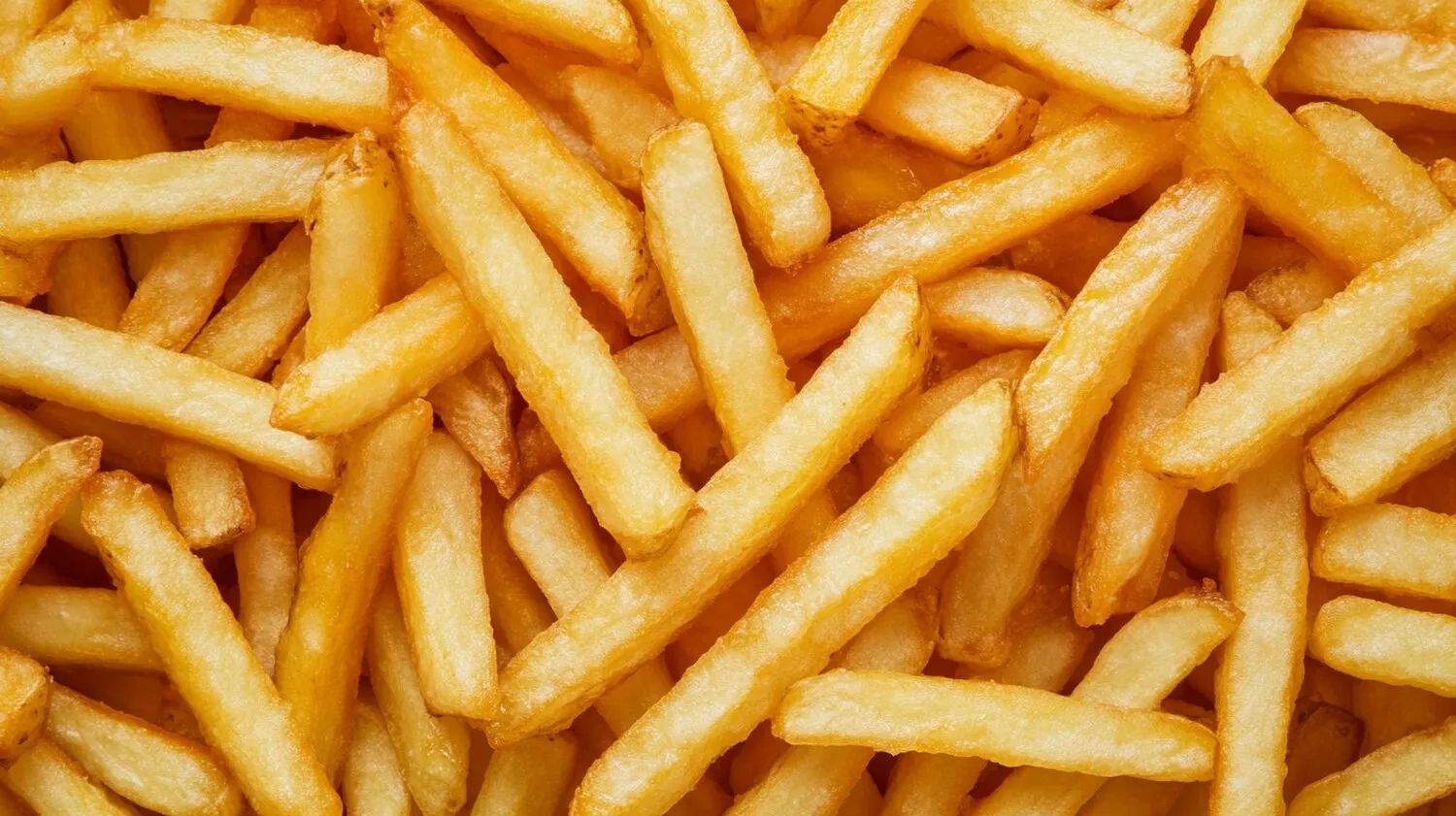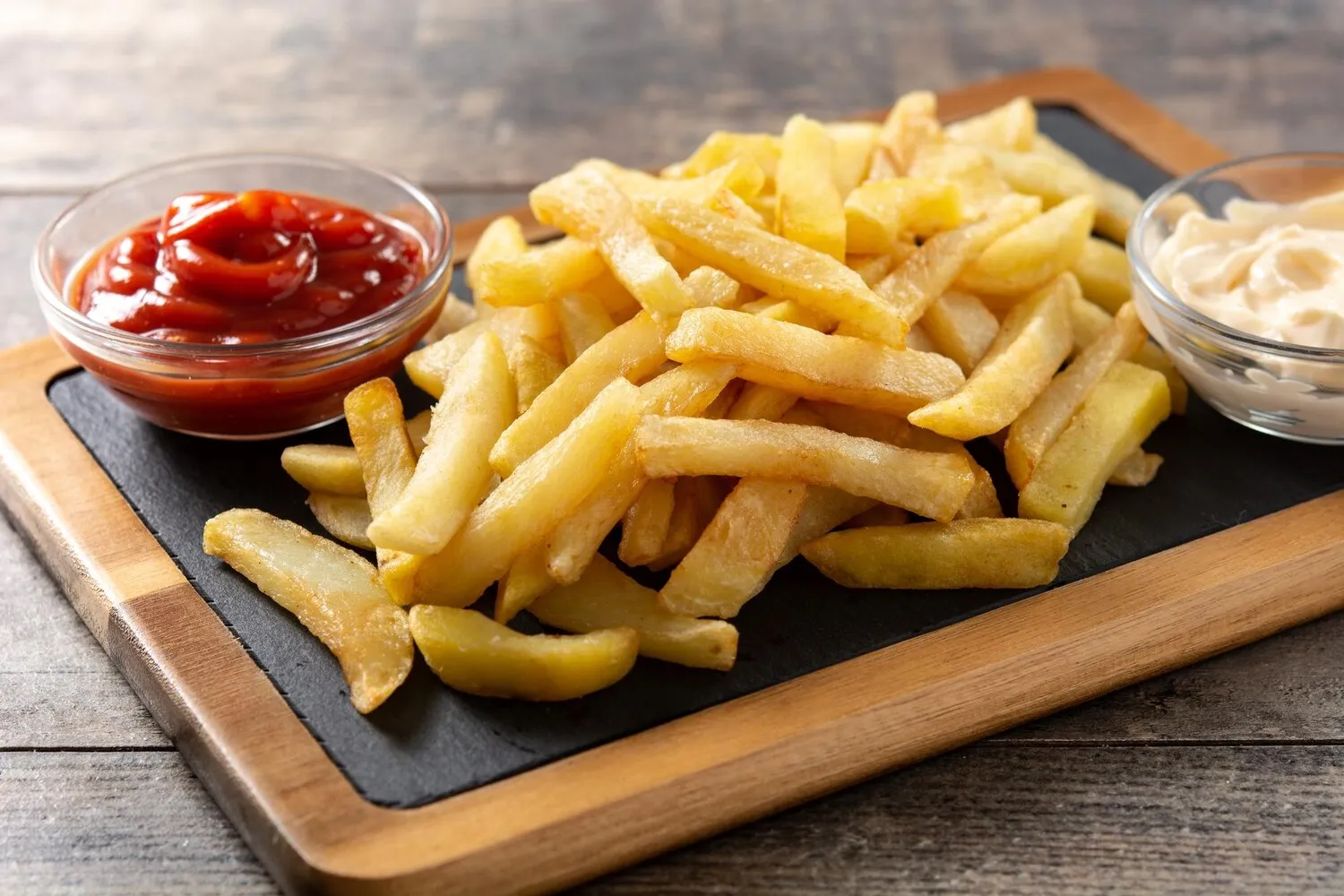
Crinkle Cut Fries
Classic crinkle cut fries.
Nutrition Facts
* The % Daily Value (DV) tells you how much a nutrient in a serving of food contributes to a daily diet. 2,000 calories a day is used for general nutrition advice.
While the exact origin of the crinkle cut fry is difficult to pinpoint, it emerged as a popular variation of French fries in the mid-20th century, influenced by the growing fast-food industry and advancements in food processing technology. It capitalized on the potato's increasing accessibility and affordability.
Crinkle cut fries are a ubiquitous side dish in American cuisine, deeply ingrained in the fast-food and casual dining experience. They represent a convenient and comforting indulgence, often associated with social gatherings and family meals.
Fast Food Staple
Crinkle cut fries are a signature item on many fast-food menus, offering a familiar and accessible option for consumers seeking a quick and satisfying snack or side dish.
Barbecue and Picnic Side
These fries are frequently served alongside burgers, hot dogs, and other grilled foods at barbecues and picnics, contributing to the casual and communal atmosphere of these events.
Comfort Food
The texture and flavor of crinkle cut fries evoke a sense of comfort and nostalgia, making them a popular choice for those seeking a familiar and satisfying meal.
The defining flavors of crinkle cut fries are primarily savory and starchy, with a delightful contrast between the crispy exterior and the soft, fluffy interior. Salt plays a crucial role in enhancing the potato's natural taste.
The dominant flavor is that of cooked potato, both earthy and slightly sweet. Deep frying in oil (traditionally vegetable oil) imparts a rich, savory flavor and creates the crispy texture. Salt is essential for bringing out the potato's natural sweetness and adding a layer of savory complexity. Some variations may include subtle seasoning like garlic powder, onion powder, or paprika for added depth. The specific oil used can also influence the overall flavor profile, with some preferring peanut oil or beef tallow for a richer taste.
Proper Oil Temperature
Maintain a consistent oil temperature of around 350-375°F (175-190°C) for optimal frying. Too low and the fries will be greasy; too high and they will burn before cooking through.
Don't Overcrowd the Fryer
Fry the fries in small batches to prevent the oil temperature from dropping too much, which can lead to soggy fries. Overcrowding also hinders even cooking.
Double Frying
For extra crispiness, consider double frying. Fry the fries at a lower temperature (around 325°F/160°C) for a few minutes, then remove and let them cool. Fry them again at a higher temperature (375°F/190°C) until golden brown and crispy.
Salting Immediately
Salt the fries immediately after removing them from the fryer while they are still hot and the oil helps the salt adhere.
Explore additional Side Dish dishes and restaurants
Explore Side DishDiscover top dining spots and culinary experiences in Wellington.
Explore WellingtonLearn more about the food culture, restaurant scene, and culinary heritage of New Zealand.
Explore New Zealand
